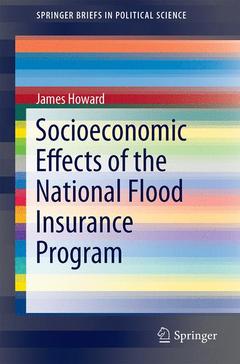Description
Socioeconomic Effects of the National Flood Insurance Program, 1st ed. 2016
SpringerBriefs in Political Science Series
Author: Howard, II James P.
Language: English
Subjects for Socioeconomic Effects of the National Flood Insurance...:
Approximative price 52.74 €
In Print (Delivery period: 15 days).
Add to cartSupport: Print on demand
Description
/li>Contents
/li>Comment
/li>
This Brief presents a benefit-cost analysis of the National Flood Insurance Program (NFIP) as well as an evaluation of its cumulative socioeconomic effects. Created by Congress in 1968, the NFIP provides flood insurance protection to property owners, in return for local government commitment to sound floodplain management. Since 1994, the NFIP has included a Flood Mitigation Assistance (FMA) program to provide local communities with support for flood mitigation. This book offers quantitative evidence of the net social benefit of the NFIP for the years 1996-2010, including an independent assessment of the consumer benefit. Second, it provides distributionally weighted analysis to show the socioeconomic effects of payments and claims. Finally, this Brief includes an analysis of the change in government revenue attributable to the NFIP and FMA programs. The models used in each component of the analysis are usable by others for extending and revising the analysis. Providing a comprehensive analysis of this increasingly important federal policy, this Brief will be of use to students of environmental economics and public policy as well as those interested in risk management in the era of climate change.
1. Introduction.- 2. Literature review.- 3. Retrospective Analysis: Structure.- 4. Consumer Surplus of Flood Insurance.- 5. Retrospective Analysis: Results.- 6. Distributionally Weighted Result.- 7. Governmental Income Analysis.- 8. Conclusion.
Provides the first comprehensive analysis of the costs and benefits of the NFIP in its nearly 50-year history
Includes the first estimate of the demand curve for flood insurance in the United States
Calculates long-term net social benefits of the NFIP and FMA through 2060

